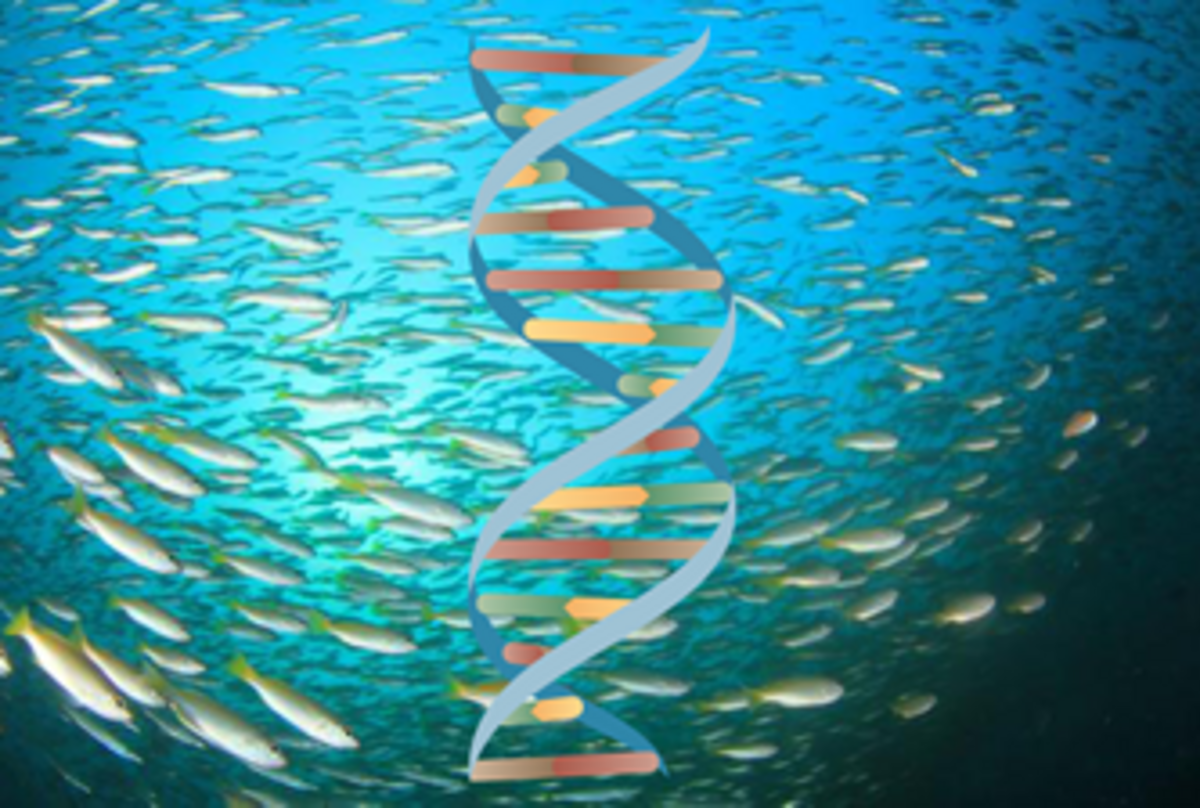The oceans and seas harbour a huge potential to contribute to global food security through fisheries and aquaculture. The exploitation of marine natural resources also provides opportunities for jobs and income.
The big challenge is to ensure both the sustainability and the conservation of complex and fragile marine ecosystems. It is generally acknowledged that the availability of best available scientific knowledge must be ensured and effectively underpin the sustainable management of seafood resources.
Under the auspices of the Organisation for Economic Co-operation and Development (OECD), an international consortium of scientists and experts involved in policymaking from 11 different countries (Australia, New Zealand, Japan, Italy, Canada, the USA, South Korea, Finland, Norway, Belgium and Chile) argues that the analytical and informative power emerging from the tremendously swiftly advancing field of genomics is underused.
In a peer-reviewed article published this week in Trends in Ecology & Evolution (TREE), the authors, led by Maren Wellenreuther (Lund University, Sweden and Plant & Food Research, New Zealand) and Louis Bernatchez (Laval University, Canada), review genomic applications of relevance to the sustainable management of seafood resources, and outline the benefits of, and barriers to, their integration. They conclude that the value of genomic information for securing the future of seafood does not need to be further demonstrated: Genetic methods can provide fundamental data to inform fisheries management and aquaculture production, as is meanwhile shown by numerous examples.
New genetic and genomic applications are developing rapidly, which underpin efforts to maintain biodiversity and curb illegal, unreported and unregulated fishing, and food fraud. A paradigm is the contribution of DNA analysis to Pacific salmon fisheries management, providing a striking example of the benefits that result from considering genetic/genomic information to support genetic stock identification and to steer conservation measures. Other examples include the use of genetic markers to refine management units of the American lobster, genomic approaches to support hatchery management of Coho salmon and other salmon species, and the application of an integrative genomics-informed approach in the aquaculture production of domesticated fish species and for the rapid diagnosis of pathogens posing a threat to aquaculture and wild populations.
Still, the authors claim that roadblocks to the routine integration of genomics into fisheries and aquaculture management persist, partly stemming from the intricate aggregate of social, cultural, economic and environmental conditions surrounding fisheries and aquaculture regulation, and partly from the historical dichotomy between “classical fisheries science” and the field of fisheries genetics and genomics.
Priority should therefore be given to immediate efforts to remove those roadblocks and focus on ways to support the integration of genomic-informed methods into management and production practices. The authors also propose solutions to pave the way forward. These include enhanced communication between stakeholders on the benefits of genomic information, which might be achieved through advocating reports by fisheries agency geneticists that would translate results into language that is accessible to non-specialists and also by making genomics data accessible to researchers worldwide.
The European Commission's Joint Research Centre (JRC), one of the contributors to this high-level international collaboration, has a long-standing record of successfully providing scientific advice to the Common Fisheries Policy (CFP), and also of supporting the enhanced use of genetic and genomic approaches in the area of fisheries and aquaculture management under the CFP remit. An example, also documented in the publication, is its involvement in the revision of the CFP control scheme in 2008, which has helped to introduce a clear reference to genetics in the control regulation (EC) 1224/2009. Moreover, a JRC report on the use of genetics to deter illegal activities in the fisheries sector was presented to and favourably received by the European Parliament in 2012.
The JRC has also contributed to the successful European Union projects such as FishPopTrace and AquaTrace, which focused on genetic and genomic approaches for the management of natural marine fish populations and farm escapees, respectively. Both projects are highlighted as encouraging results in the publication, as they demonstrate that genomics is increasingly part of focused research programmes that try to support policy, management and conservation efforts linked to living marine resources.
In the TREE publication, the JRC explains how scientific advice constitutes one of the main pillars of the CFP, and why, despite this explicit requirement for scientific advice on one hand, and the informative power of genomics for the management of fisheries and aquaculture on the other, genetic and genomic data continue to be insufficiently integrated into the management of fisheries and aquaculture. The JRC argues that there are positive signs that awareness of the value of genetic and genomic information for fisheries and aquaculture management is on the rise, as demonstrated by the CFP control regulation mentioned above, but that greater efforts are needed to be able to fully tap into the array of opportunities offered by the extremely swiftly developing field of genomics, for the objectives of the European Union's Common Fisheries Policy.
